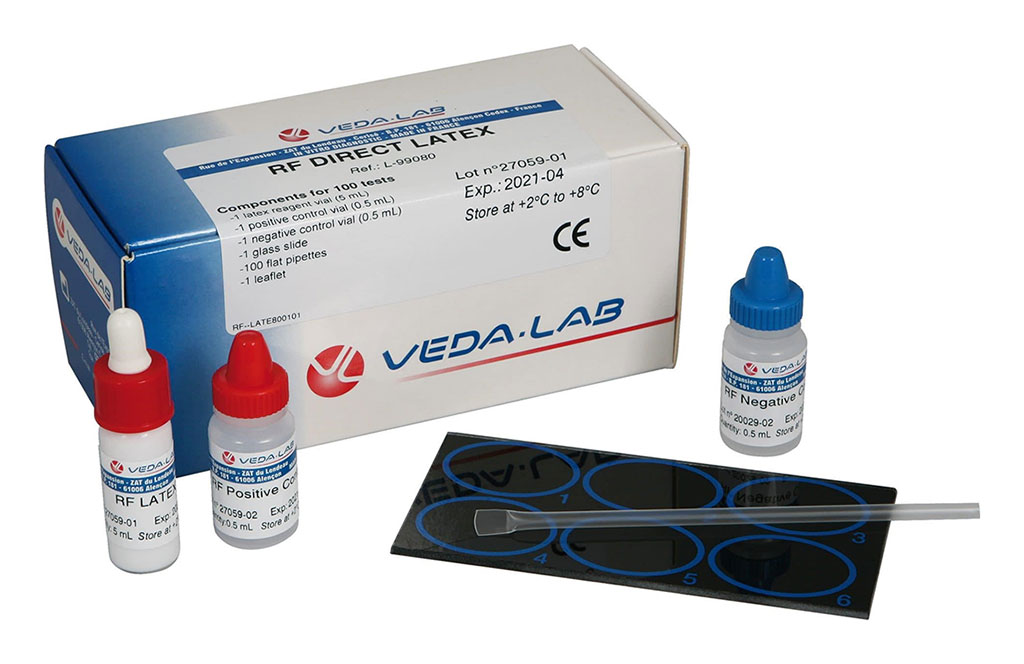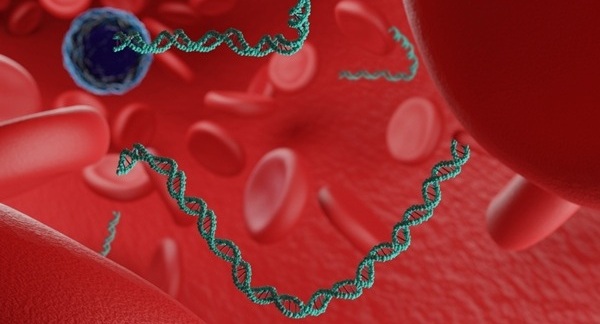Specificity of Rheumatoid Factor Detected by Latex Fixation Compared
By LabMedica International staff writers
Posted on 02 Sep 2020
Rheumatoid arthritis is a chronic inflammatory and autoimmune disorder that can affect more than just the joints. In some people, the condition can damage a wide variety of body systems, including the skin, eyes, lungs, heart and blood vessels. Posted on 02 Sep 2020
Rheumatoid factor (RF), originally defined as pathological autoantibodies to immunoglobulin G (IgG) that are detected in rheumatoid arthritis, but has turned out to be multi‐specific antibodies, some of which exhibit immunoregulatory properties. The functions of rheumatoid factor and its role in the development of autoimmune disease remain a mystery.

Image: The RF direct latex tests for the detection of rheumatoid factor (RF) in serum (Photo courtesy of VedaLab).
Immunologists at the Udmurt State University (Izhevsk, Russia) obtained sera from patients with rheumatoid arthritis or symptoms of joint pain and swelling. IgG that was considered native was isolated from the blood plasma of healthy donors by precipitation with ammonium sulfate and purified by size‐exclusion chromatography. The native IgG was used in a competitive assay.
The RF direct latex test (VedaLab, Cerisé, France) was used to detect rheumatoid factor in the patients’ sera. The agglutination activity of the sera was scored from “+++” (or 3) to “−” (or 0). In some samples, the titer was determined. Regulatory rheumatoid factor (regRF) titer was determined in an agglutination test using human IgG‐loaded tanned human erythrocytes. To produce papain Fc fragments of IgG, the team used the limited proteolysis method. Human IgG (Equitech‐Bio, Kerrville, TX, USA) was digested by papain and processed. The RF titer in rheumatoid arthritis serum was determined by latex fixation.
The investigators reported that regRF and pathology‐associated RF constitute different antibody populations. Pathology‐associated RF is specific for lyophilized IgG. RegRF does not interact with IgG. RegRF is specific to conformers of IgG Fc fragments that have a reduced hinge. In latex‐positive rheumatoid arthritis sera, regRF may be present in addition to pathology‐associated RF. The latex fixation method detects both rheumatoid factor populations.
The authors concluded that RegRF and pathology‐associated RF are populations of rheumatoid factor that have different specificity. RegRF is specific for conformers IgG Fc fragments that have a reduced hinge, but not for IgG. Pathology‐associated RF is specific for epitopes appearing on lyophilized IgG. In latex‐positive rheumatoid arthritis sera, regulatory rheumatoid factor may be present in addition to pathology‐associated RF. The latex fixation method detects both rheumatoid factor populations. The tanned IgG‐loaded erythrocyte agglutination test selectively detects regulatory rheumatoid factor. The study was published on August 12, 2020 in the Journal of Clinical Laboratory Analysis.













